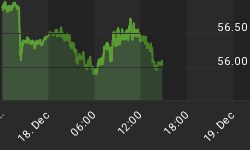For much of the past few generations, the debate over balancing the federal budget has been a central feature of every presidential campaign. But over time, the goalposts have moved. As the amount of red ink has grown steadily larger, the suggested time frames to restore balance have gotten increasingly longer, while the suggested cuts in government spending have gotten increasingly shallower. In recent years, talk of balancing the budget gave way to vague promises such as "cutting the deficit in half in five years." In the current campaign, however, it appears as if the goalposts have been moved so far that they are no longer in the field of play. I would argue that they are completely out of the stadium.
It says a great deal about where we are that the symbolic budget plan proposed last year by Congressman Paul Ryan, the newly minted vice presidential nominee, has created such outrage among democrats and caution among republicans. The Obama campaign warns that the Ryan budget is a recipe for national disaster that will pad the coffers of the wealthy while damning the majority of Americans to perpetual poverty. The plan is apparently so radical that even the Romney campaign, while embracing the messenger, is distancing itself from the message (it appears that Romney wants to bathe himself in the aura of fresh thinking without actually offering any fresh thoughts). In interview after interview, both Romney and Ryan refuse to discuss the details of Ryan's budget while slamming Obama for his callous "cuts" in Medicare spending.
(It is extremely disheartening that the top point of contention in the campaign this week is each candidate's assertion that their presidency could be the most trusted not to cut Medicare. Mindful of vulnerabilities among swing state retirees, Republicans have also taken Social Security cuts off the table as well. What hope do we have of reigning in government spending when even supposedly conservative Republicans refuse to consider cuts in the largest and fastest growing federal programs?)
So what was the Ryan Budget's radical departure from the status quo that has caused such uproar? If enacted today, the Ryan budget would so drastically upend the fiscal picture that the U.S. federal budget would come into balance in just... wait for it.... 27 years! This is because the Ryan budget doesn't actually cut anything. At no point in Ryan's decades long budget timeline does he ever suggest that the government spend less than it had the year before. He doesn't touch a penny in current Social Security or Medicare outlays, nor in the bloated defense budget. His apocalypse inducing departure comes from trying to limit the rate of increase in federal spending to "just" 3.1% annually. This is below the 4.3% rate of increase that is currently baked into the budget, and farther below what we would likely see if Obama's priorities were adopted.
Because there are no actual cuts in his budget, Ryan hopes that fiscal balance can be restored by 2040 only because he assumes that we achieve returns to the annual economic growth that are equal to levels averaged for much of the last century. In other words, he sees slow growth of the last four years as the aberration, not the new normal. As with all other government projections, this is on the extreme optimistic end of the spectrum. In truth, there is nothing on the horizon that should make anyone think these growth figures will be achieved. America's crushing debt, burdensome regulations, political paralysis, and nagging demographic problems bode poorly for the return to trend line growth anytime soon. More likely, based on the speed towhich republicans will shrink from popular backlash, is that the "cuts" that Ryan proposes will be abandoned as soon as they prove to be politically unpopular.
In fact, among his other overly-optimistic assumptions are that the unemployment rate falls to 4% by 2015 and an unprecedented 2.8% by 2021, another real estate boom begins almost immediately, and there is an average inflation and ten-year treasury rate for the next ten years of 2.04 and 4.15 respectively. These are assumptions that would make even the most rabid economic cheerleaders sit on their pompoms. Despite these pollyannish economic growth and record low unemployment projections, Ryan still assumes interest rates will remain near historic lows and that none of the cheap money showered onto the economy will ever find its way into the CPI. In other words, it's the economic equivalent of winning the lottery twice in a row while failing to account for the higher taxes that accompany such good fortune.
Like all other government forecasters, Ryan never considers how rising interest costs on the many trillions of dollars of outstanding government debt holdthe potential to completely upend budget projections. For more on this, see my recent commentary "The Real Fiscal Cliff."
More likely, the continued accumulation of unsustainable levels of debt under the Ryan plan will eventually cause our creditors to lose confidence in our ability to repay. It will cause interest to spike, the economy to tank, unemployment to soar, spending to rise, revenues to decline, and the budget deficit to spiral out of control. Rising interest rates hold the potential to spark a sovereign debt and currency crisis that willrender the entire plan irrelevant anyway.
While I appreciate that Ryan has the courage to take a position at the vanguard of his party in the campaign for fiscal responsibility, the modesty of his plan is just the latest reminder of how utterly divorced from reality Washington politicians remain. Like all of his brethren, Ryan is pinning his budget battling plans on the pain free "grow your way out of it plan." But as long the government consumes so much of the nation's productivity, the conditions to create that growth will never occur. Hope is not a strategy.















